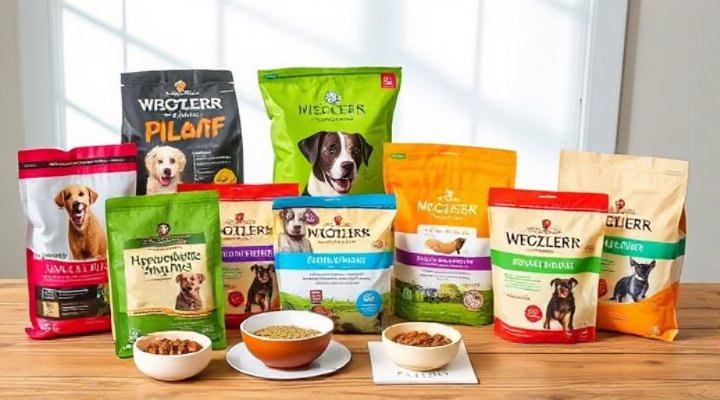Finding the best dog food for allergies can be a daunting task, but it’s essential for your pet’s health and comfort. Allergies in dogs can manifest in various ways, from skin irritations to digestive issues. Therefore, selecting the right diet is crucial to alleviate these symptoms and ensure your furry friend leads a happy life.

Understanding Dog Food Allergies
Dog food allergies occur when your pet’s immune system mistakenly identifies a particular protein as harmful. Common allergens include beef, chicken, dairy, and wheat. In other words, these ingredients can trigger adverse reactions, making it vital to identify and eliminate them from your dog’s diet.
For instance, my own dog, Max, developed a severe allergy to chicken. After switching to a hypoallergenic diet, his symptoms improved dramatically. Above all, consulting your vet is the first step in diagnosing food allergies.

Choosing the Best Hypoallergenic Dog Food
Hypoallergenic dog food is specifically formulated to minimize the risk of allergic reactions. These diets often feature novel proteins like venison or duck, which are less likely to cause issues. Moreover, they may include easily digestible carbohydrates such as sweet potatoes or peas.
According to the American Veterinary Medical Association, hypoallergenic diets can significantly improve your dog’s quality of life. Additionally, brands like Hill’s Prescription Diet offer vet-recommended solutions for allergic dogs.

Key Ingredients to Look For
When selecting the best dog food for allergies, focus on limited-ingredient diets. These foods contain fewer components, reducing the chance of triggering an allergic response. Likewise, look for omega-3 fatty acids, which can help soothe inflamed skin.
For example, foods with salmon or flaxseed are excellent choices. Furthermore, avoid artificial additives and preservatives, as these can exacerbate allergies. Brands like Open Farm emphasize transparency and sustainability, making them a reliable option.

Transitioning to a New Diet
Switching your dog to a new diet should be done gradually to avoid digestive upset. Start by mixing a small amount of the new food with their current diet, increasing the proportion over a week or two. Subsequently, monitor your dog for any signs of improvement or adverse reactions.
During this transition, keep a food diary to track your dog’s progress. Most importantly, be patient—it can take several weeks to see noticeable changes.
Final Thoughts
Choosing the best dog food for allergies requires careful consideration and patience. By understanding your dog’s specific needs and consulting with your vet, you can find a diet that keeps them healthy and happy. Remember, every dog is unique, so what works for one may not work for another.
For more tips on pet nutrition, check out our guide on puppy food recommendations.
Related Keywords: hypoallergenic dog food, best dog food for allergies, allergy-friendly dog food, healthy dog diet, dog food brands

